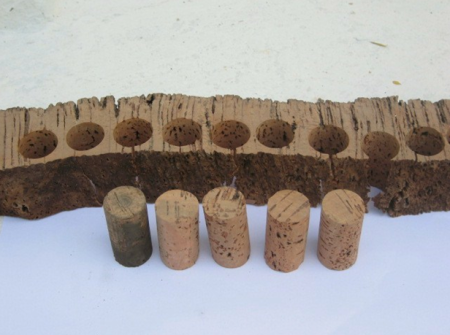
Objective:
Estimate reproduction cork thickness as a criterion to examine the commercial value and to fit a non-linear model for predicting cork weight to guide the forest decision makers toward a reasonable harvest.
The objective is to guide forest decision-makers towards a reasonable cork harvest by:
• examining the thickness of cork as a criterion for estimating commercial value
• evaluating the intensity of the debarking operation on the tree
• establishing a non-linear model for predicting cork weight.
Context:
Despite the economic importance of cork, research on its growth and production are rare in Tunisia. Many factors influence cork production, including genetic variability (Ferreira et al., 2000), site fertility (Montero, 1987), dendrometric parameters, and conditions of the debarking operation. In Tunisia, little research has been devoted to the practice itself of debarking and even fewer are cork production models. It is in this context that this study is inscribed in order to contribute to a better evaluation of the cork production and to help the decision of the manager by practical silvicultural tools.
Contacts:
Boutheina Stiti, stitibou@gmail.com, http://www.inrgref.agrinet.tn/
Hatem Chaar, chaarh@yahoo.com, http://www.inat.tn/
Abdelhamid Khaldi, khalditn@yahoo.fr, http://www.inrgref.agrinet.tn/
Belgacem Henchi, b.hanchi@gmail.com, http://www.fst.rnu.tn/
Further information:
Ferreira A, Lopez F, Pereira H(2000). Caractérisation de la croissance et de la qualité du liège dans une région de production. Ann. For. Sci. 57 (2000) 187:193.
Montero G (1987). Modelos para cuantificar la producción de corcho en alcornocales en función de la calidad de la estación y de los tratamientos selvícolas, Tesis Doctorales, 75 INIA Madrid.
Stiti B, Chaar H, Khaldi K, Belgacem Henchi B (2019). Analyse et modélisation de la production du liège en vue d’une gestion optimale: cas de la forêt de Ain Snoussi, Nord Ouest de la Tunisie. 2019. Journal of new sciences, Agriculture and Biotechnology, 65(4), 4088-4095Volume 65(4). E-ISSN 2286-5314.